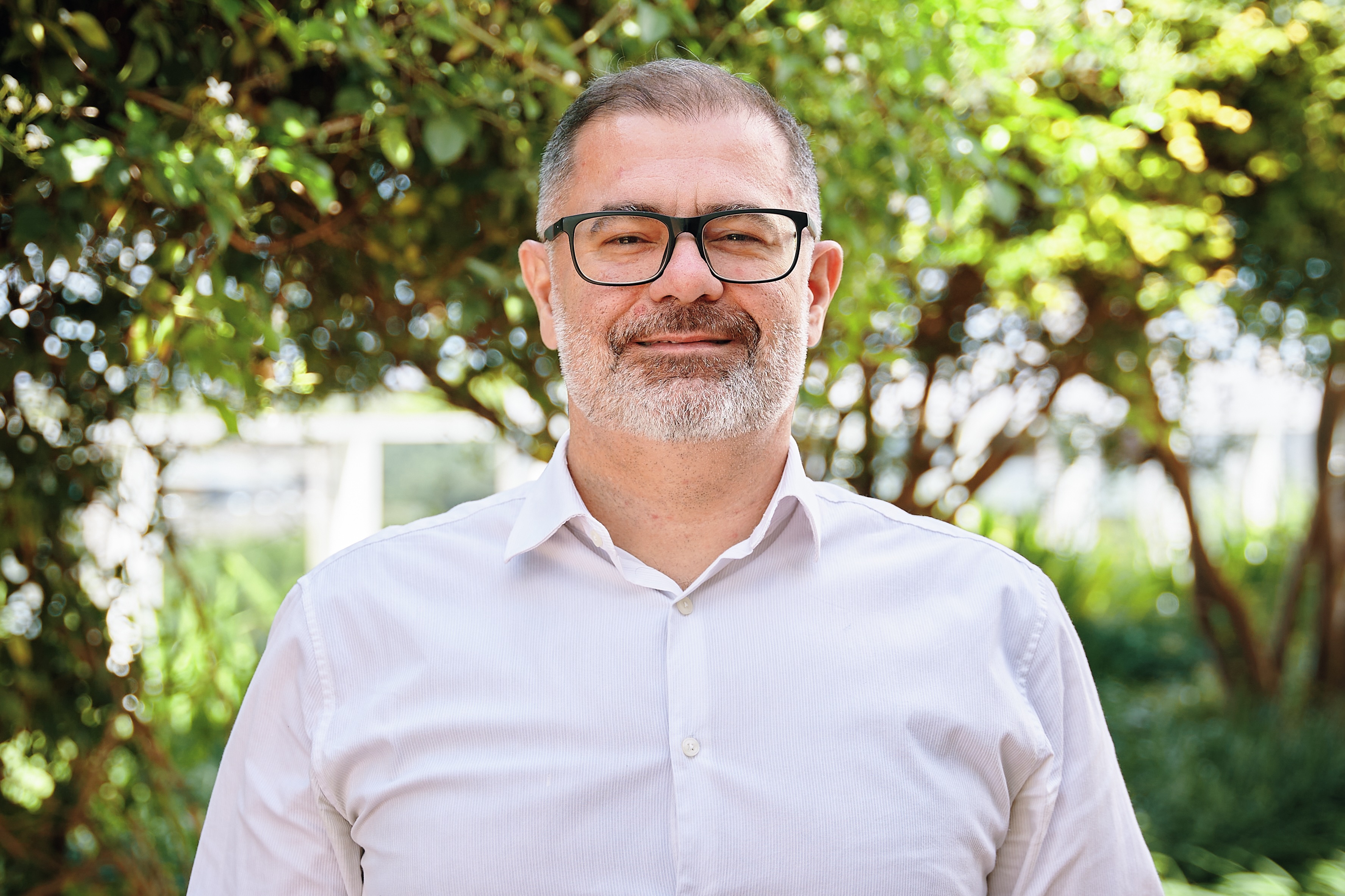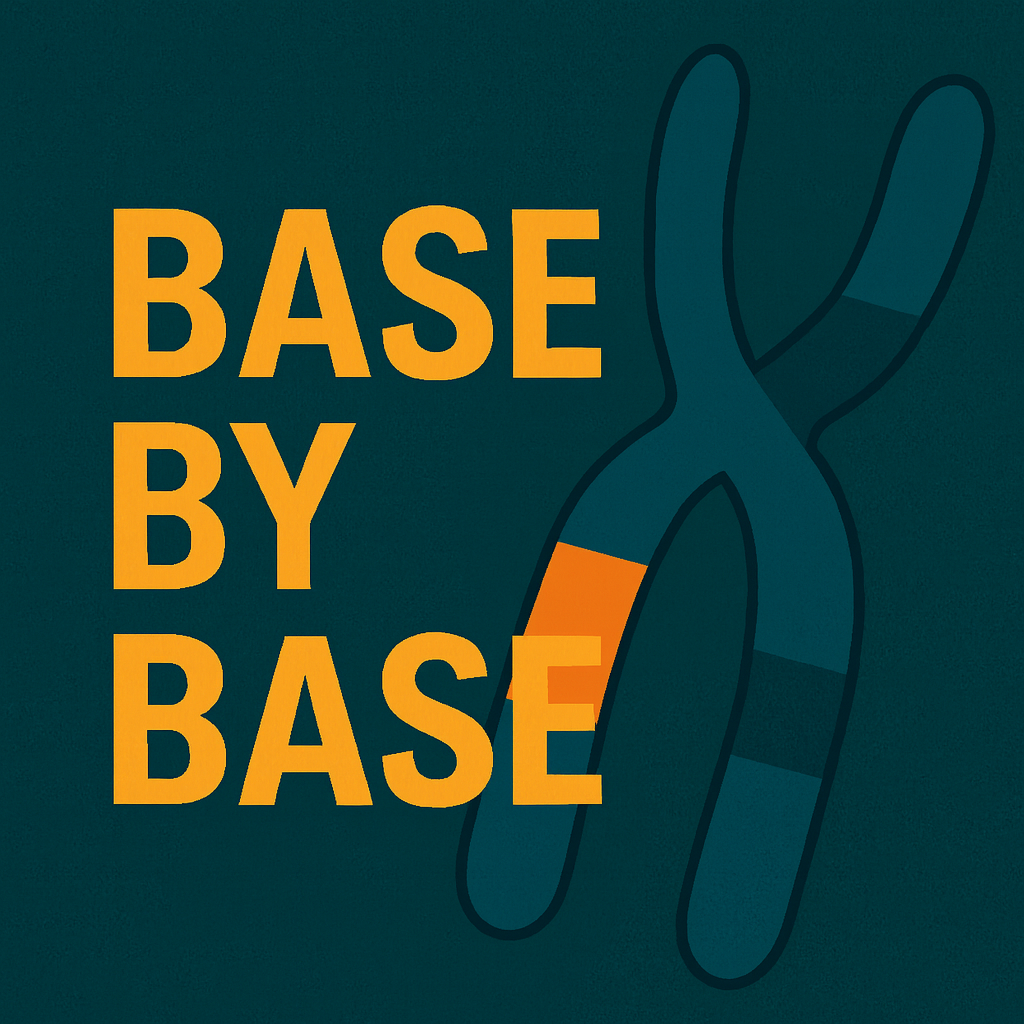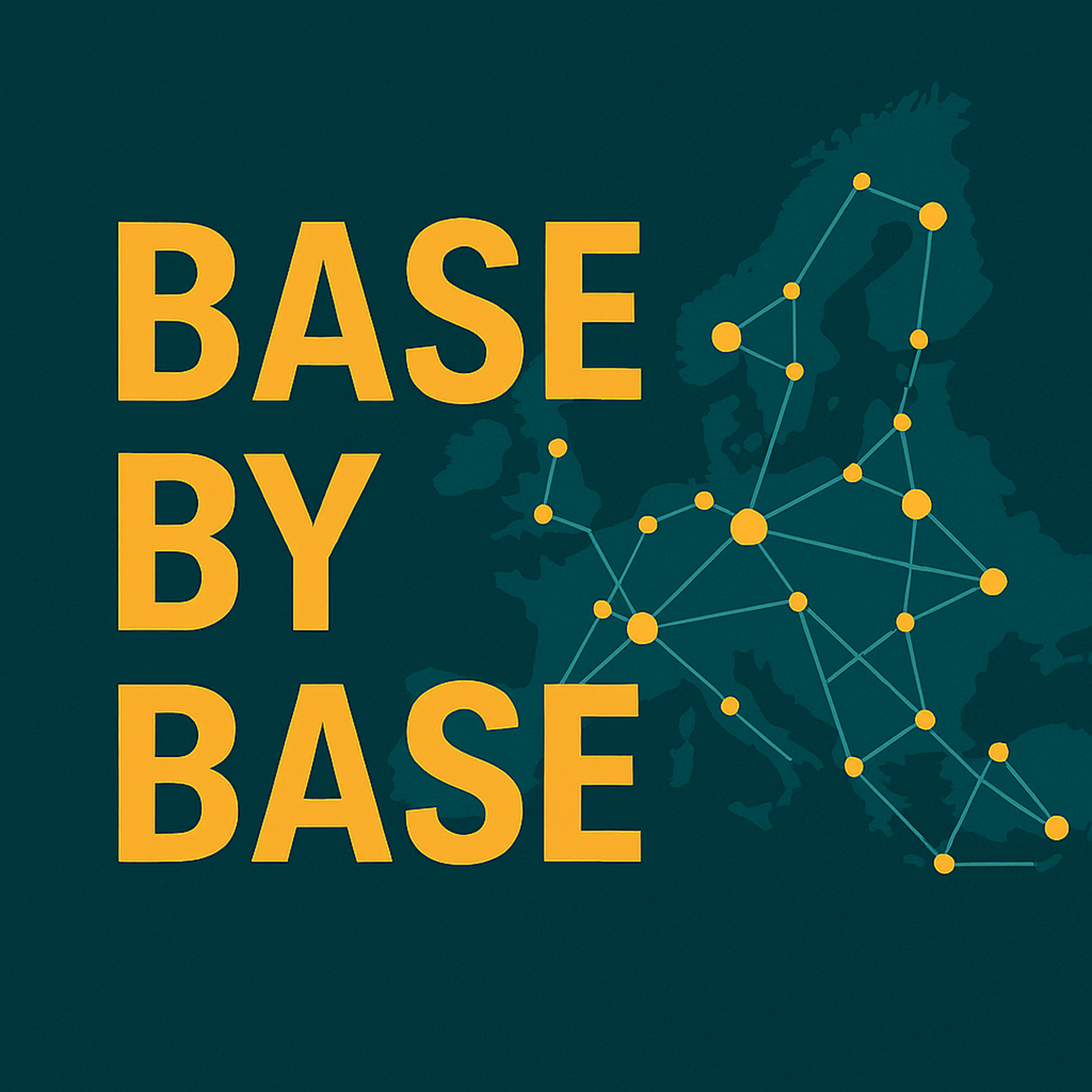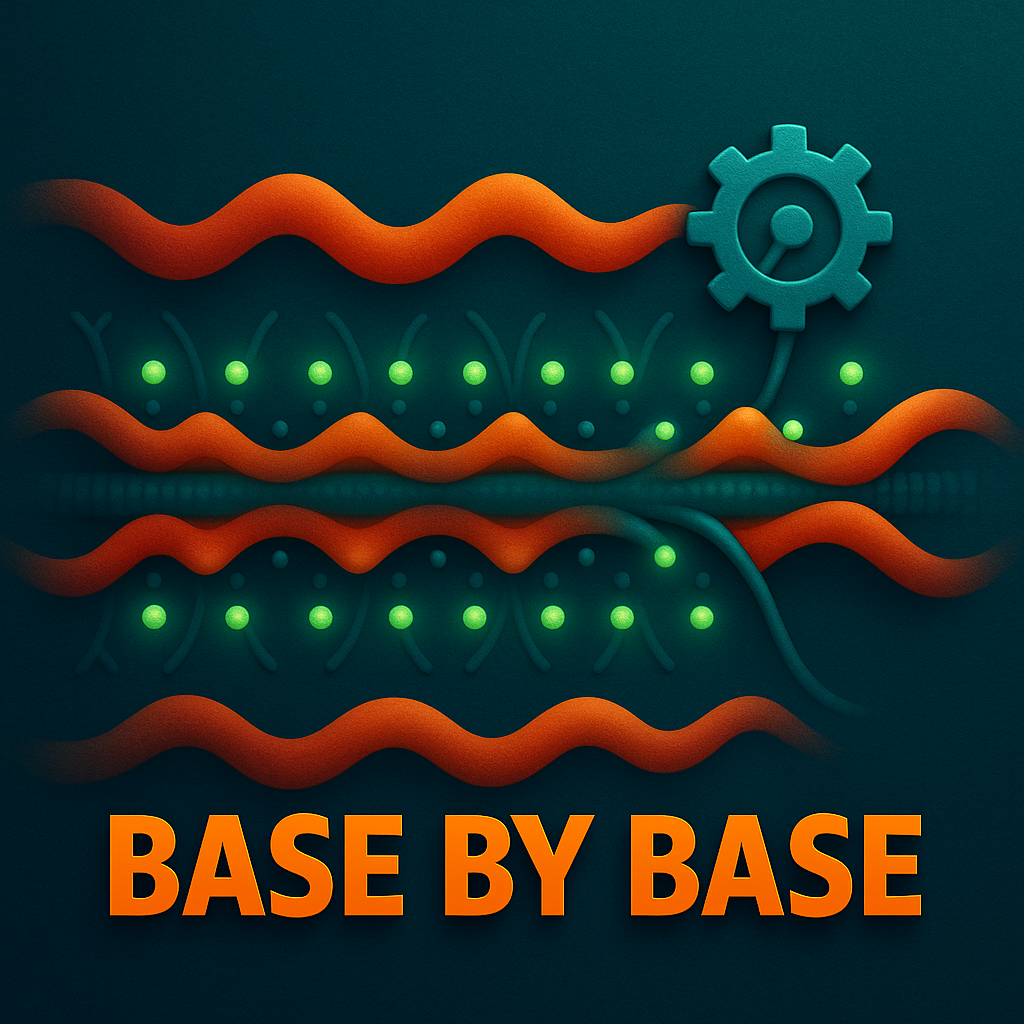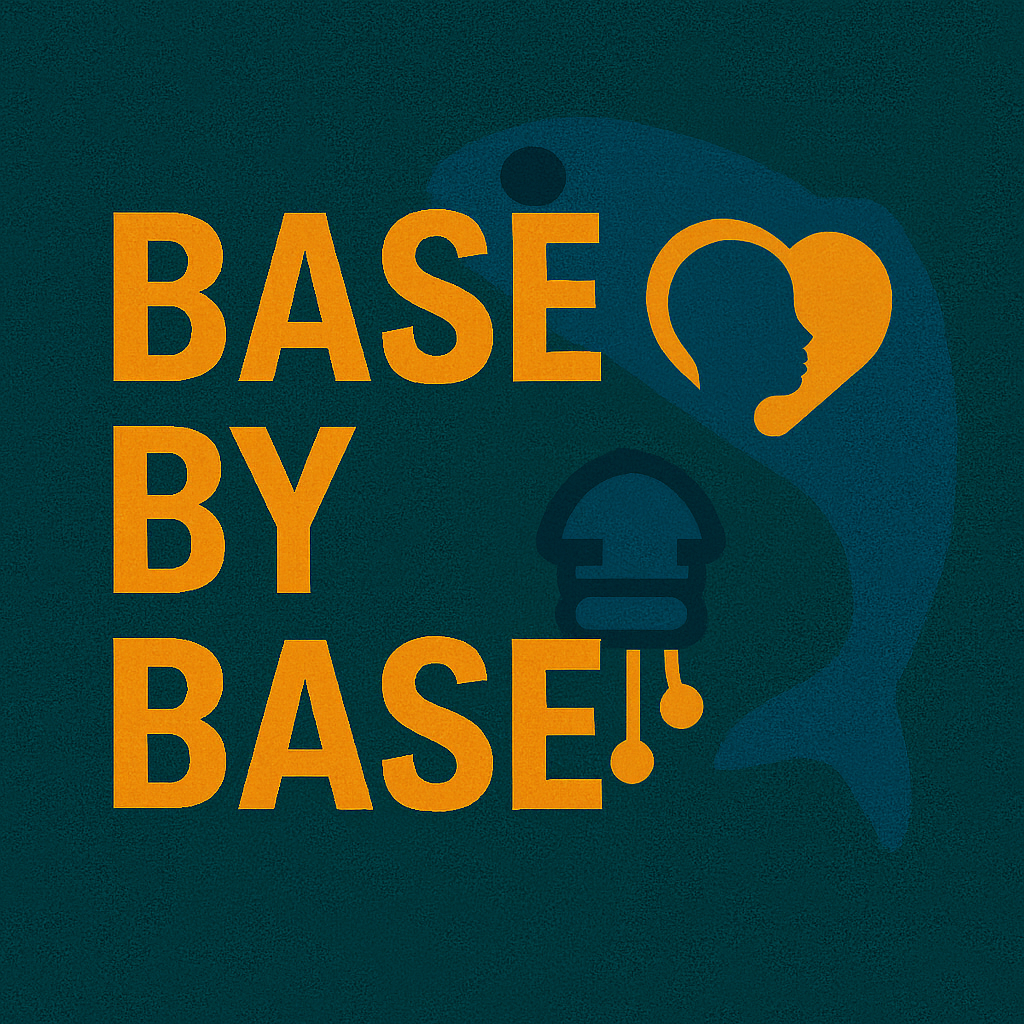Episode Transcript
[00:00:14] Speaker A: Welcome to base, My base, the papercast that brings genomics to you wherever you are.
I want you to think about a really fundamental moment, the moment that genetically set modern humans apart from our closest relatives, the great apes. You know, when we look at chimps, gorillas, orangutans, they all share this core genetic structure. They have 48 chromosomes.
[00:00:39] Speaker B: 48? Yeah. That's the standard number for them.
[00:00:41] Speaker A: But you and I, we have 46.
[00:00:43] Speaker B: Only 46.
[00:00:44] Speaker A: And this isn't just like a slow drift of mutations over time.
[00:00:47] Speaker B: No, not at all. It's the result of one specific huge event.
[00:00:51] Speaker A: The formation of human chromosome 2. HSA 2.
[00:00:54] Speaker B: That's the one. It happened when two ancestral ape chromosomes basically fused together end to end.
[00:00:59] Speaker A: A massive restructuring. You know, dating this event has always been kind of a key anchor point for our lineage.
[00:01:05] Speaker B: Absolutely.
[00:01:05] Speaker A: People thought it happened, what, Maybe up to 4, maybe even 5 million years ago, a really long time back?
[00:01:10] Speaker B: That was the general ballpark. Yeah. Though with a lot of uncertainty.
[00:01:13] Speaker A: But what if. What if new computational methods, some really rigorous updates, could take that huge timeframe and, well, squeeze it.
[00:01:20] Speaker B: Squeeze it down significantly, maybe into a.
[00:01:22] Speaker A: Window of less than a million years.
That would really shift our understanding of when we became, you know, 46 chromosome humans.
[00:01:30] Speaker B: Okay, yeah, let's definitely unpack this. This deep dive is all based on research that's dusted off and seriously upgraded a computational method, one designed specifically to date that HSA2 fusion event.
[00:01:44] Speaker A: Okay.
[00:01:45] Speaker B: And what's really cool is that by doing this, they've ended up creating a pretty novel and stable tool for maybe recalibrating the whole evolutionary timeline for all the great apes. For all the great apes of hominoid di. Yeah. We're talking about setting that evolutionary clock with potentially much better accuracy. Wow. And it's based entirely on tracking these subtle biases in the genome.
[00:02:06] Speaker A: Okay, that sounds like some serious computational work.
[00:02:08] Speaker B: It really is.
[00:02:09] Speaker A: So before we get into the nitty gritty, the nuts and bolts, we should give a special recognition here, definitely, to the research team. This work comes from the Institute of Informatics at Warsaw University and also the Department of Molecular and Human Genetics at Baylor College of Medicine.
[00:02:25] Speaker B: Right. Big props to them for pushing forward our understanding of this, this crucial timeline using these clever computational approaches.
[00:02:33] Speaker A: Okay, so the background, this HSA2 fusion event, it's kind of a landmark in human genetics, isn't it?
[00:02:40] Speaker B: Oh, absolutely. It's one of the most obvious differences. This reduction from 48 down to 46 chromosomes. We've known about it for decades now.
[00:02:47] Speaker A: And the Evidence is literally written into our DNA.
[00:02:49] Speaker B: It is. Yeah. At a specific spot, two Q13, Q14, one, on our chromosome two.
[00:02:55] Speaker A: And if you look there, you can actually see the scars of the merger.
[00:02:59] Speaker B: You can. You find these inverted telomeric repeats. Now, telomeres normally belong only at the very tips of chromosomes.
[00:03:05] Speaker A: And get protective caps.
[00:03:07] Speaker B: Exactly. But here you find telomere like sequences stuck right in the middle of chromosome 2. That's the fusion point. And you also find this block of degenerate satellite sequences. Basically the leftovers of an old defunct centromere from one of the ancestral chromosomes.
[00:03:23] Speaker A: So the evidence is rock solid that it happened.
[00:03:25] Speaker B: Undeniable proof. Yeah, the fusion definitely occurred.
[00:03:27] Speaker A: But like you said, pinning down when, that's where the trouble starts.
[00:03:32] Speaker B: That's been the challenge. Huge debate, lots of uncertainty.
[00:03:35] Speaker A: The original methods, they relied on looking at substitutions in the genome. Something called bgc.
[00:03:41] Speaker B: Right. Biased gene conversion. Bgc, that's key to the older clock attempts.
[00:03:46] Speaker A: Okay, so what is bgc? Can you break that down simply?
[00:03:49] Speaker B: Sure. Think of it as a subtle bias in the DNA repair process.
[00:03:53] Speaker A: Yep.
[00:03:53] Speaker B: Especially near spots where. Where recombination happens a lot. The repair machinery tends to favor strong base pairs, G and C over weak ones A and T. So if there's.
[00:04:03] Speaker A: A mistake involving an A or T, it's more likely to get fixed into.
[00:04:07] Speaker B: A G or C. Kind of, yeah. It biases the outcome towards gc. And these events, these AT to GC changes, they don't happen randomly. Scattered. They often cluster together.
[00:04:16] Speaker A: Especially near telomeres. You said.
[00:04:17] Speaker B: Exactly, near telomeres and other recombination hotspots. So, previous work, like a key study by Dresser and colleagues, and tried to track how fast these biased clusters built.
[00:04:27] Speaker A: Up near the fusion site using a metric called ubcs.
[00:04:31] Speaker B: Ubcs Statistics. Yeah, the unexpected bias. Clustered substitutions.
The idea was to use the buildup of these clusters like a kind of evolutionary clock specific to that fusion region.
[00:04:42] Speaker A: Okay. Makes sense in principle. But what was the problem?
[00:04:45] Speaker B: The problem was. Well, stability, reliability. Their original estimate put the fusion at about 0.74 million years ago.
[00:04:53] Speaker A: Okay, but.
[00:04:54] Speaker B: And this is a huge. But, the 95% confidence interval was enormous. It stretched from basically zero, meaning potentially yesterday, geologically speaking, all the way out to 2.81 million years ago.
[00:05:07] Speaker A: That's. That's not very precise at all, not remotely.
[00:05:09] Speaker B: That massive gap tells you the method, or at least how it was implemented back then, was just too noisy, too sensitive to really trust for a precise date.
[00:05:18] Speaker A: And I guess that just highlights how Hard dating these deep evolutionary events really is.
[00:05:22] Speaker B: It's incredibly difficult.
[00:05:23] Speaker A: You mentioned earlier, even things like the gibbon human split estimates in the literature can vary by, like, 5 million years, sometimes easily.
[00:05:30] Speaker B: That kind of uncertainty just creates huge fog around the whole timeline of hominin evolution.
[00:05:35] Speaker A: Okay, so here's where the new research comes in and presumably tries to fix this, Right? They didn't just rerun the old analysis. You said they improved the actual algorithm for calculating that UBCS statistic.
[00:05:48] Speaker B: Fundamentally improved it, yeah.
[00:05:49] Speaker A: So if the old way was unstable, what did they change? What makes this version robust?
[00:05:55] Speaker B: The key innovation was tackling a counting problem. Essentially, the researchers brought in a mathematical tool called the inclusion exclusion principle to recalculate the UBCS statistics.
[00:06:06] Speaker A: Inclusion exclusion. Okay, sounds mathematical. Why does that help?
[00:06:10] Speaker B: Imagine you're trying to count these clusters of biased substitutions on the chromosome, right? Now, what happens if some clusters overlap? Which they do a lot. Especially in those GC rich areas near the old telomeres, near the fusion sites.
[00:06:23] Speaker A: Ah, okay, so the old method got confused by the overlaps.
[00:06:26] Speaker B: Pretty much. It would often double count substitutions in the overlapping regions. Or it couldn't accurately define the boundaries of intersecting clusters. It just led to noisy, unreliable statistics.
[00:06:37] Speaker A: And inclusion exclusion fixes that?
[00:06:39] Speaker B: Precisely. It's a way to mathematically guarantee that you count everything exactly once.
Even when you have complex overlapping sets. It corrects perfectly for those double counts.
[00:06:50] Speaker A: So they get the exact UBCS value for any region.
[00:06:53] Speaker B: Exactly. Even for the most messy, complex patterns of clusters. And because it's exact, the measure becomes way less sensitive to small changes in parameters or noise in the sequence data. It's just fundamentally more stable.
[00:07:06] Speaker A: That makes a lot of sense. So they weren't just like, cleaning the data, they were fixing the measuring tool itself.
[00:07:13] Speaker B: That's the great way to put it. Fixing the lens, not just wiping it.
[00:07:17] Speaker A: But sometimes adding mathematical complexity can introduce its own issues. Are we sure this principle guarantees stability here?
[00:07:23] Speaker B: That's a fair point. But the complexity is in the calculation step, ensuring accuracy. It doesn't rely on adding complex assumptions about the biology, just on counting correctly. Since they're calculating the exact accumulation, not an approximation, it makes the measure inherently more reliable as a way to track evolutionary distance.
[00:07:41] Speaker A: Okay, I'm with you. So they took this refined method, Right.
[00:07:44] Speaker B: And applied it to the latest high quality genome assemblies for modern humans and the great apes.
[00:07:48] Speaker A: So chimpanzee, bonobo, gorilla, orangutan and gibbon. Yep.
[00:07:53] Speaker B: They meticulously identified all the single nucleotide differences. The Snds between humans and each ape.
[00:08:00] Speaker A: And specifically focused on those biased ones, the AT to GC changes.
[00:08:04] Speaker B: That's right. They classified those weak to strong substitutions, which are the signal for bgc.
[00:08:09] Speaker A: Alright, moment of truth then. With this improved, more stable clock, what's the new date for the HSA2 fusion, this defining human event?
[00:08:18] Speaker B: Okay, so analyzing the enrichment, the buildup of these weak to strong substitutions right around that fusion scar on chromosome 2, the team revised the fusion time to approximately 0.9 million years ago.
[00:08:29] Speaker A: 0.9 million. Okay, that's a bit more recent than the old central gas of the slightly.
[00:08:35] Speaker B: Yeah, but the real story, the big breakthrough, isn't just that central number. It's the confidence interval.
[00:08:40] Speaker A: Ah, the uncertainty range.
[00:08:42] Speaker B: Did it shrink dramatically? The new 95% confidence interval is much, much tighter. It runs from 0.4 million years ago to 1.5 million years ago.
[00:08:51] Speaker A: Okay, 0.4 to 1.5 Maya, that's way better than 0 to 2.8.
[00:08:55] Speaker B: Hugely better. That narrower window gives paleoanthropologists, geneticists, everyone, a much more reliable anchor point in time.
[00:09:04] Speaker A: And where does that place the event?
[00:09:05] Speaker B: It puts it firmly in the middle Pleistocene, which is fascinating because that period also saw major developments like significant brain expansion and more sophisticated tool use in our genus Homo.
[00:09:17] Speaker A: Interesting timing. Now I saw in the paper they ran this analysis on both chimp and bonobo genomes relative to humans. He did, but the bonobo results looked a bit off. Did that cause concern?
[00:09:29] Speaker B: It did, and it led to an interesting discussion, actually, when they used the exact same procedure comparing human to bonobo. The date came out a bit earlier, around 0.67 million years ago.
[00:09:39] Speaker A: Okay.
[00:09:39] Speaker B: And crucially, that wide, uncertain confidence interval almost came back. It was much wider, stretching from 0 to 1.3 Maya back towards the instability of the old method.
[00:09:49] Speaker A: So what's the explanation? Did the method fail for bonobos?
[00:09:52] Speaker B: The researchers argue, quite convincingly, I think, that it's likely not the method, but the data itself. The current bonobo genome assembly.
[00:10:00] Speaker A: Ah, the quality of the sequence.
[00:10:03] Speaker B: Yeah. They point out that the assembly is known to be a bit ambiguous, maybe incomplete. Right in that specific region near the fusion site on the corresponding bonobo chromosome.
[00:10:13] Speaker A: So it might be missing some sequence.
[00:10:15] Speaker B: It's possible that a chunk of the telomeric and subtelomeric sequence is just missing or poorly assembled in the current bonobo reference genome. And if that's the case, it would definitely skew the substitution count and mess up the dating.
[00:10:30] Speaker A: Right. Garbage in, garbage out. Even with a Perfect method.
[00:10:33] Speaker B: Exactly. It's a good reminder that genomics always depends on the quality of the assemblies, which are constantly improving. But not always perfect yet.
[00:10:41] Speaker A: Okay, but beyond just dating the fusion, what really caught my eye was using this UBCS statistic as a broader evolutionary clock.
[00:10:48] Speaker B: Yes, that's perhaps its most powerful implication.
[00:10:51] Speaker A: Did it hold up when they looked across all the apes? Did the statistic track evolutionary distance consistently?
[00:10:57] Speaker B: It did. Remarkably well. They found that the UBCS statistic measured around that ancestral fusion site region was monotonic.
[00:11:04] Speaker A: Monotonic, meaning it changes consistently in one direction?
[00:11:07] Speaker B: Precisely. As you look at species that are genetically further away from humans, gorilla than orangutan, then given the UBCs value calculated for that region consistently and predictably decreased.
[00:11:20] Speaker A: So more dist. Relative. Lower ubcs score near the fusion site.
[00:11:24] Speaker B: Exactly. It confirms that this measure, calculated properly, is acting like a stable, reliable genomic clock. Tracking divergence time.
[00:11:33] Speaker A: That's huge. So they could then use this clock to recalibrate the split times for all the apes?
[00:11:38] Speaker B: They did. They used the UBCs proportion relative to the human value, and then they needed one anchor point in time to calibrate the clock.
[00:11:45] Speaker A: What do they use?
[00:11:46] Speaker B: They fixed the human chimpanzee split time at 6 million years ago, which is widely accepted, though still debated.
[00:11:51] Speaker A: Average figure using 6 Maya for human chimp as the baseline.
[00:11:55] Speaker B: They calculated revised divergence dates for the others based purely on this ubcs clock. And this is where it gets really interesting, providing this consistent, unified set of dates from one method.
[00:12:06] Speaker A: So what did they find? What are the new estimates?
[00:12:08] Speaker B: Okay, so based on this UBCS calibration, the chimpanzee split itself falls between 4.7 and 6.6 Maya, consistent with the anchor. The gorilla split between 6.6 and 9.9 Maya. The orangutan split between 12.5 and 18.4.
[00:12:25] Speaker A: Maya, getting further back.
[00:12:27] Speaker B: And the given split the most distant, between 20.7 and 29.6 Maya.
[00:12:32] Speaker A: Wow. So it provides a full timeline, all derived from this one refined statistic around the fusion site.
[00:12:38] Speaker B: Exactly. And these dates generally align well with estimates from other methods, like fossil calibrations or other molecular clocks. But often those estimates are fuzzier or derived from different data types. This provides a single computationally consistent framework.
[00:12:52] Speaker A: So, connecting this to the bigger picture, what's the main takeaway here?
[00:12:56] Speaker B: I think the main takeaway is that tracking the accumulation of these bias clustered substitutions, the bcs, using this refined UBCS calculation, can reliably work as a proxy.
[00:13:05] Speaker A: For Evolutionary time similar to how people sometimes use overall GC content?
[00:13:09] Speaker B: Kind of, yeah, because GC content is also influenced by bgc. But this UCS method is more localized and with the new algorithm, potentially more precise, especially for dating specific events like the HSA2 fusion.
[00:13:24] Speaker A: Right. So for the fusion itself, the key.
[00:13:26] Speaker B: Message is we now have a much more reliable, computationally robust estimate, placing it around 0.9 million years ago, within that tighter 0.4 to 1.5 me window.
[00:13:37] Speaker A: And that gives us a solid time point to correlate with other evolutionary changes.
[00:13:41] Speaker B: Exactly. It helps refine the timeline of our own genus Homo.
[00:13:45] Speaker A: Did the researchers talk about limitations or next steps? Where does this go now?
[00:13:49] Speaker B: Yeah, they were quite upfront about limitations. They acknowledged that for the really deep splits, like orangutan, especially Gibbon, the estimates are still less robust. The confidence intervals are wider there.
[00:13:59] Speaker A: Why is that?
[00:14:00] Speaker B: It suggests that relying on just this one type of data, the UBCS signal from the fusion region starts to get a bit blurred over tens of millions of years. Signal saturation, perhaps, or other evolutionary factors muddying the waters.
[00:14:12] Speaker A: Makes sense. So future work might need to combine this with other data.
[00:14:15] Speaker B: That's what they propose. Integrating this UBCS clock with other genomic data types, maybe using more sophisticated statistical models, like hidden Markov models or Bayesian coalescent approaches, especially for those deeper branches of the ape family tree.
[00:14:31] Speaker A: And what about applying this sharper UBCS tool right away? Any immediate plans?
[00:14:36] Speaker B: Yes, the immediate next step they mention is exciting.
[00:14:39] Speaker A: Applying this method to other hominins like Neanderthals and Denisovans.
[00:14:43] Speaker B: Exactly. They plan to analyze the available ancient genomes of Neanderthals and Denisovans using these UBCS statistics. The goal is to get more precise dates for their speciation events relative to modern humans.
[00:14:56] Speaker A: That could be really revealing.
[00:14:58] Speaker B: Absolutely. Refining that more recent part of the human family tree is a major goal. It's all about building a better, more reliable evolutionary stopwatch.
[00:15:06] Speaker A: Okay, so let's try and summarize the take home message from this deep dive.
[00:15:09] Speaker B: Right.
[00:15:10] Speaker A: Human evolution's most dramatic chromosomal change, the HSA2 fusion that defined our species with 46 chromosomes, is now computationally pinned down much more tightly to a window of about 0.4 to 1.5 million years ago. With the best estimate sitting around 0.9 million years ago.
[00:15:28] Speaker B: Right. And the methodology behind that date. This refined UBCS calculation, using the inclusion exclusion principle, seems to provide a stable, repeatable genomic clock, not just for the fusion, but potentially for hominid evolution more broadly.
[00:15:42] Speaker A: A more reliable clock for our past.
[00:15:44] Speaker B: Indeed. But you know, this tighter dating raises its own fascinating question.
[00:15:49] Speaker A: Oh, what's that?
[00:15:50] Speaker B: Well, think about it. Fusing two entire chromosomes? That's a massive genetic upheaval. It likely would have caused fertility issues initially, problems pairing chromosomes during meiosis. It's inherently a risky, potentially damaging event, right?
[00:16:04] Speaker A: So how did it stick exactly?
[00:16:06] Speaker B: Given the significance and potential downsides, how did this new 46 chromosome configuration become fixed across the entire human lineage? Presumably quite rapidly after it occurred around 0.9 million years ago?
[00:16:16] Speaker A: There must have been some strong advantage.
[00:16:18] Speaker B: The evolutionary forces, the selective pressures favoring this fused arrangement must have been incredibly powerful. Understanding what those pressures were, why 46 chromosomes was ultimately better for our ancestors. That's the next big puzzle, isn't it?
[00:16:33] Speaker A: A very provocative thought to end on this episode was based on an Open Access article under the CC BY 4.0 license. You can find a direct link to the paper and the license in our episode description. If you enjoyed this, follow or subscribe in your podcast app and leave a five star rating. If you'd like to support our work, use the donation link in the description. Thanks for listening and join us next time as we explore more science base by base.
[00:16:58] Speaker B: Sam.
